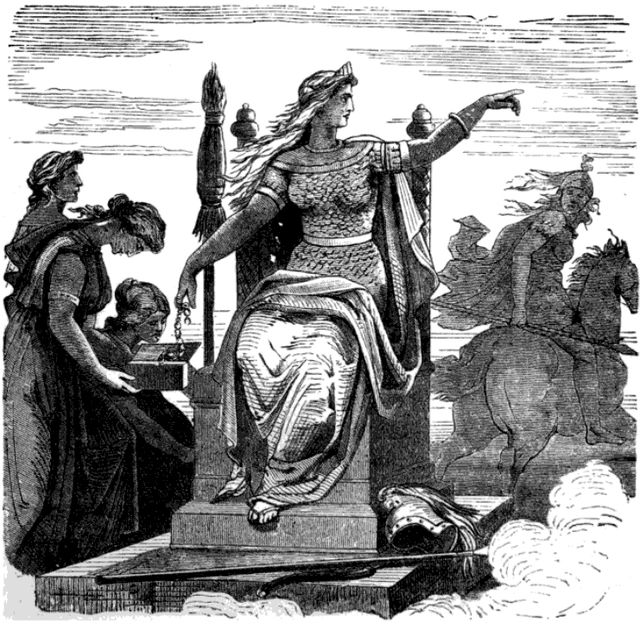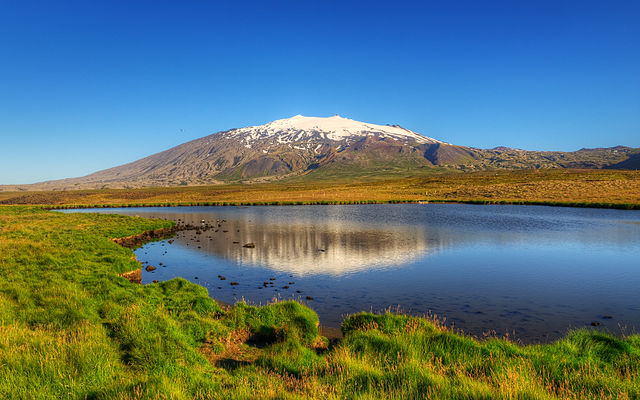Fulla or Volla is a goddess in Germanic mythology. In Norse mythology, Fulla is described as wearing a golden band and as tending to the ashen box and the footwear owned by the goddess Frigg, and, in addition, Frigg confides in Fulla her secrets. Fulla is attested in the Poetic Edda, compiled in the 13th century from earlier traditional sources; the Prose Edda, written in the 13th century by Snorri Sturluson; and in skaldic poetry. Volla (Folla) is attested in the "Horse Cure" Merseburg Incantation, recorded anonymously in the 10th century in Old High German, in which she assists in healing the wounded foal of Phol and is referred to as Frigg's sister. Scholars have proposed theories about the implications of the goddess.
A depiction of Fulla kneeling beside her mistress, Frigg, (1865) by Ludwig Pietsch.
The goddess Frigg surrounded by three other goddesses. Fulla holds Frigg's eski on the bottom left. Illustration (1882) by Emil Doepler.
Wodan Heals Balder's Horse (1905) by Emil Doepler
Fulla holds Frigg's eski in Frigg and Her Maidens (1902).
Æsir or ēse are gods in Germanic paganism. In Old Nordic religion and mythology, the precise meaning of the term "Æsir" is debated, with it being able to refer to both the gods in general or specifically to one of the main families of gods, in contrast to the Vanir, with whom they waged war, ultimately leading to a joining of the families. The term can further be used to describe local gods that were believed to live in specific features in the landscape such as fells. In the Old English Wið færstice, the Ēse are referred to, along with elves, as harmful beings that could cause a stabbing pain, although exactly how they were conceived of by the author of the text is unclear.
Æsir gathered around the body of Baldr. Painting by Christoffer Wilhelm Eckersberg 1817
The Eyrarland Statue, typically interpreted as depicting Thor. Thor's riding across the sky is likely reflected in the modern Swedish word for "thunderstorm" - Swedish: åska, deriving from an earlier form meaning "the driving of the áss".
Óðinn throws his spear in the Æsir-Vanir war, illustration by Lorenz Frølich (1895)
Snæfell in Iceland, where according to Barðar saga, Barðr Snæfellsáss became an áss who was worshipped in the region and protected those who lived there.








